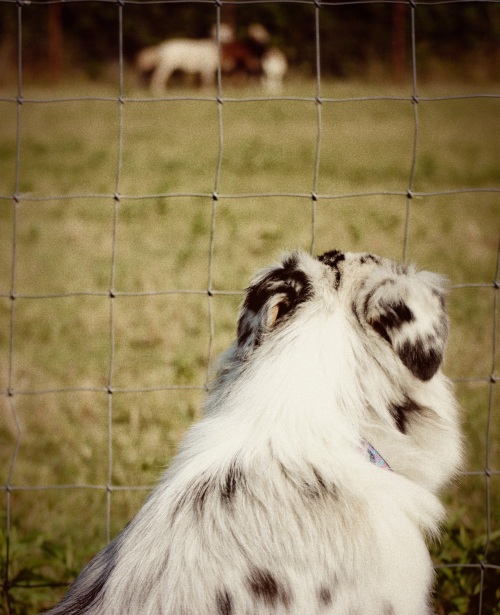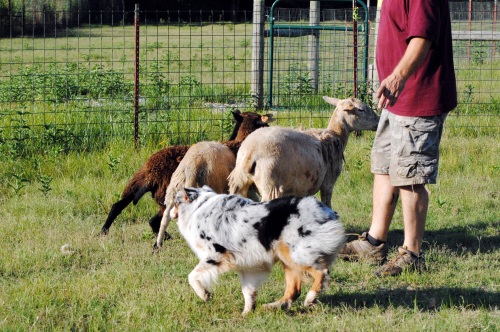Hopefully I made it clear in the first part of this series, but just in case I didn’t, I am NOT picking on working dogs. I love me a dog that can work stock. I have never said that if a dog can work it wouldn’t do well in the show ring, but there are a lot of people that say if a dog can do well in conformation it can’t work stock (which makes no sense!). What I was picking on was breeding for any one trait exclusively at the expense, or apathy, of other important traits. Whether that “all important” trait is working ability, head, coat, color, etc, it can’t be idealized to the point that the dog as a whole suffers because of that focus.
On the other hand comes the question, can you be breeding to preserve the breed, and use dogs that don’t show that instinct? In my case this is herding, so I will probably just refer to it as such, but you can substitute hunting, pulling, etc. I don’t have the perfect answer to that question but here’s what I do know, if I’m looking at the whole picture of a dog I am not going to automatically include or exclude a certain dog on herding instinct alone.
If I come across a dog in my program that isn’t showing the level of working ability I’d like to see in a dog, I would have to seriously consider whether or not to breed that dog, but I wouldn’t make an immediate decision to take the dog out of my breeding program. In the past I thought perhaps I would, but the more I think about it, for what I want to do, I think that a dog showing low or maybe even no instinct would be a similar situation to me as a dog with an ugly head or not enough coat . It’s something I would try to breed back in, but I would hate to take out an otherwise good dog that could have something to contribute. That’s the point where I have to balance, and I don’t think that herding instinct means more or less than any of my other priorities. Instinct is important, and I certainly want to preserve it, but it is not the be all end all of my breeding program.
I know some people might think that is wrong, and that’s really okay because this is nothing other than pure opinion, but what I’ve really had to look at is also creating a dog that can best fit into the world I put it into. The honest to goodness fact of the matter is that the majority of my dogs are going to be heading into pet, performance, or serious show homes. Most of those homes are not going to have the resources and/or desire to have a true working dog that has energy and drive to work stock every single day. If they wanted a dog like that, they probably wouldn’t be looking at me anyway because most of the really serious working dog people either breed their own dogs or buy them from someone on another ranch… none of those “foofy show dogs” for them.
While I certainly would hope and expect that my dogs could hold their own in the herding trial world if their owners choose to do that venue, a trial dog is still not a working dog (and that is a whole other can of worms I’m not getting in to). There is very little need for true working dogs in our modern society, and to create a dog that has the drive of a real working ranch dog and placing those dogs into family homes would be miserable for the dogs and the families. I would much rather create a moderate dog with an off switch.
As I’ve said before, my opinion might change in the future after I’ve seen what my efforts produce, but for now, my ultimate goals is moderation in all aspects. Moderate coat, moderate bone, moderate drive. If I can come close to that, I think I can be happy.

